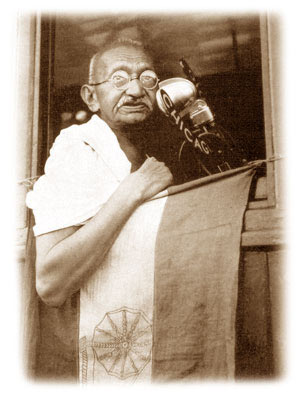Localization and Globalization
(Paper read by Dr. Y. P Anand on 19 August under the ‘GANDHIRAMA 2012’ Programme (17 to 22 August, 2012)
organized by Indian Council of Philosophical Research (ICPR) at JNU, New Delhi)
Introduction
From early times, human beings have tended to conduct their numerous activities at varying levels of aggregation, such as at individual, family, community, country, or cross-country levels. ‘Globalization’ may be defined as the process of integration of communities/ nations/ countries through cross-country flows covering various economic, social, cultural and political aspects. Thus, ‘globalization’ has been an ongoing process from the very beginning of human civilization, its progress moving in tandem with the progress in technological means of communication and mobility, with the corresponding progress in travel, trade, social structures, and politico-economic processes, structures and controls. Imperialism, colonialism and the widening scale of wars were among the manifestations of growing ‘globalization’ during 17th to 20th centuries.
‘Globalization’ is not a value-neutral phenomenon. The post-World War II era of growing ‘globalization’, which has tended to reduce the earth to a ‘global village’, too has its distinct gainers and losers, its own peculiar characteristics of inequitable progress and exploitation, and it has significant social and ecological costs.
As a reaction such adverse impacts of the on-going globalization process, a counter-emphasis has been developing for ‘localization’ in diverse forms in different parts of the world. Here, ‘localization’, essentially means an economy of neighbourhood and self-reliance, particularly in respect of more basic needs, as a means to ensure freedom and to protect the rights and interests of local/ weaker sections and communities against exploitation by the globalizing forces, particularly the ‘free market’ economy. In the Indian context, the whole idea of ‘localization’ has been embodied in the comprehensive and well-known Gandhian concept of ‘Swadeshi’, which had been developing in India as a reaction to ‘global’ exploitation since the colonial rule itself. It denotes the ideology of whatever ‘localization’ would mean in its positive aspects, such as decentralization of economic controls and decisions, appropriate levels of self-reliance, concern for fulfilling basic needs of all, and protection of natural resources.
The concept of ‘swadeshi’ is not only an agenda for cooperation, sharing and concern within each community but also engenders development that grows outwards from each ‘local’ unit into a system of widening ‘concentric circles’, each circle giving strength to its inner circles and growing in harmony with its outer circles. Hence, the right course of ‘globalization’ can only proceed on the foundation of the Gandhian concept of ‘swadeshi’ as applied to the situations evolving in today’s world. This is the thesis of this Paper.
This Paper has three main parts. The first part gives salient features of the Gandhian concept of ‘Swadeshi’ relevant to the present process of ‘Globalization’. The second part discusses the Contemporary Approach of ‘Globalization’ and its essential deficits and shortcomings, and the third part gives why ‘Globalization with Swadeshi’ for a sustainable social-economic order, is the only right form for ‘Globalizaion’. The Paper ends with a brief ‘Conclusion’.

